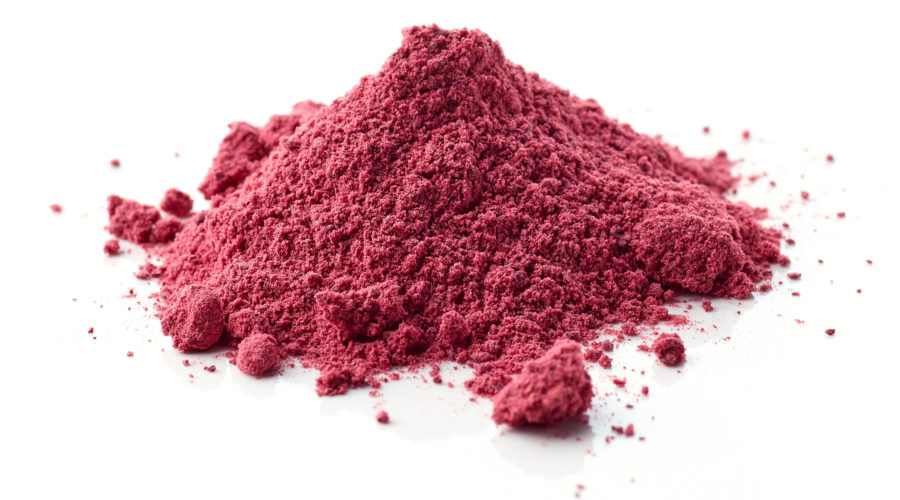2C-B: Receptor Action, Effects, & More
While not a classic psychedelic, 2C-B is still a popular choice for many users in both a recreational and therapeutic context. Many people find it the ideal psychedelic to use in a recreational setting, due to its distinct effects. The “headspace” of 2C-B is often much more easy-going than that of LSD or psilocybin mushrooms.
Compared to classic psychedelics, there is little research on 2C-B. Nonetheless, what we do know about this substance is fascinating, including its history. Further research could help uncover the benefits of this novel psychedelic.
Interested in joining a Psychedelics Clinical Trial? Sign up here now and we will connect you with a clinical trial in your area when one becomes available.
What Is 2C-B?
2C-B (4-Bromo-2,5-dimethoxyphenethylamine) is a psychedelic compound belonging to the 2C family. Other commonly used 2C psychedelics include 2C-I and 2C-E. Like these other compounds, 2C-B falls under the broader category of phenethylamine psychedelics. The only classic psychedelic that is a phenethylamine is mescaline.
While primarily a psychedelic, 2C-B is also a mild entactogen. An entactogen (or empathogen) is a substance that produces experiences of empathy, emotional openness, and connection. MDMA has strong entactogenic/empathogenic effects. Mescaline trips can feature intense versions of these effects as well.
2C-B has some alternative street names, but that’s not to say that they’re widely used names for the drug. Some people may refer to 2C-B as “Nexus”, “pink cocaine”, “Venus”, or “Bees”.
A popular drug combination is known as a “Nexus flip”: MDMA (“ecstasy”) plus 2C-B.
2C-B comes in the form of powder, pills, or capsules. 2C-B pills and capsules vary in their dosages. It is typically taken orally, with the effects lasting 4-8 hours.
However, some people insufflate (snort) the powder, which leads to a faster onset and shorter duration (2-4 hours). Many users report intense nasal burning while doing 2C-B, making it one of the most painful drugs to insufflate.
The History Of 2C-B
The American chemist Alexander “Sasha” Shulgin first synthesized 2C-B in 1974. He described this synthesis and his experiences with the compound in his book PiHKAL: A Chemical Love Story (1991). “PiHKAL” stands for “Phenethylamines I Have Known and Loved”.
PiHKAL focuses on psychoactive phenethylamines with psychedelic and/or empathogenic effects. Shulgin synthesized these phenethylamine compounds after trying mescaline around 1960. He became interested in the chemistry of mescaline, as well as that of its derivatives.
Shulgin’s 1991 book describes 179 different compounds, most of which he discovered himself. Along with 2C-B, many other 2C compounds are included in PiHKAL, including 2C-T-2 and 2C-T-7.
The book also includes instructions for how to synthesize MDMA, which remains one of the most common clandestine methods of its manufacture to this day. As a result, many refer to him as the “Godfather of ecstasy”.
In PiHKAL, Shulgin described the effects of 2C-B at various dosages. After he synthesized and experimented with the substance, therapists began using it as an aid in therapy. Ann Shulgin, Sasha’s wife and an advocate of MDMA-assisted therapy, utilized 2C-B in therapeutic settings (when the drug was still legal).
2C-B was first sold commercially as an aphrodisiac in the 1980s under the trade name “Erox”, which was manufactured by the German pharmaceutical company Drittewelle.
As you can see from the packaging, each tablet contained 5 mg of 2C-B. It was recommended to take it on an empty stomach one hour before the start of physical intimacy. Effects last around 4-6 hours. Taking it more than once a week would decrease its effectiveness (owing to increased tolerance).
The packaging for “Erox” also stated that symptoms of overdose could include increased blood pressure, rapid heartbeat, insomnia, restlessness, mental confusion, and hallucinations.
2C-B first became popular in the United States as a substitute for MDMA, which was banned in 1985. The main 2C varieties were eventually classified as Schedule I drugs and became illegal around 1994. However, as with many synthetic drugs, clandestine chemists began creating slightly different versions of the 2C compounds so they could legally sell them.
The recreational use of 2C-B at raves and clubs became more popular in the 2000s. In 2019, journalist James Nolan wrote a piece for Vice titled “2C-B Is the Drug Taking Over the UK’s Clubs”. 2C-B has also become a popular drug of choice at musical festivals, with more psychonauts showing interest in it as well.
The Pharmacology Of 2C-B
Unlike other most common psychedelics, research has shown 2C-B to be a partial agonist of serotonin 5-HT2A and 5-HT2C receptors. (A partial agonist is a drug that binds to and activates a given receptor, but has only partial efficacy compared to a full agonist.)
2C-B is a potent antagonist at the 5-HT2A receptor. This means that, unlike its agonist action at the 5-HT2C receptor, it blocks the action of the 5-HT2A receptor.
The Effects Of 2C-B
In an interview, Sasha said, “[2C-B] is, in my opinion, one of the most graceful, erotic, sensual, introspective compounds I have ever invented. For most people, it is a short-lived and comfortable psychedelic, with neither toxic side-effects nor next-day hang-over.”
There is currently little academic research on the effects of 2C-B in humans. The information available is largely anecdotal. Nonetheless, users often describe the effects of 2C-B as being more manageable than other psychedelics. This doesn’t mean, of course, that high-dose experiences will necessarily be easy-going.
Many people compare the effects of 2C-B to a mixture of a serotonergic psychedelic (e.g. LSD or mescaline) and MDMA. Psychedelic enthusiasts have also described mescaline in this way. However, the 2C-B experience is typically considered less introspective, insightful, and deep than states induced by classic psychedelics.
Physical Effects
- Stimulation
- A body high, characterized by an intense soft, warm glow. The physical euphoria exhibits aspects of MDMA and LSD.
- Nausea
- Increased perspiration
- Pupil dilation
- Tactile enhancement
- Teeth grinding (but less intense compared to MDMA)
Visual Effects
- Color enhancement
- Pattern recognition enhancement
- Visual acuity enhancement
- Objects may appear to be melting, flowing, breathing, and morphing
- After images
- Color shifting
- Depth perception distortions
- Scenery slicing
- Symmetrical texture repetition
- Tracers
- Visual geometry with eyes open or closed
- Visual hallucinations at higher doses
Emotional Effects
- Increased libido
- Euphoria
- Enhanced empathy
- Anxiety
- Confusion
Cognitive Effects
- Introspection enhancement
- Creativity enhancement
- Increased sense of humor (often leading to laughter fits)
- Thought acceleration
- Time distortion
- Wakefulness
Auditory Effects
- Auditory enhancement
- Distortion
- Auditory hallucinations
Mystical Effects
While 2C-B has been reported as having the potential to produce mystical states, they are reported to occur less consistently or intensely than with classic psychedelics — such as psilocybin, mescaline, LSD, or DMT. Nonetheless, mystical effects are possible with 2C-B at higher doses and include:
- Ego death
- Unity and interconnectedness
- Ineffability
- Timelessness and spacelessness
- Paradoxical states (e.g. the sense of being everything and nothing at the same time)
- Coming into contact with the “divine”, a “higher power”, or “ultimate reality”
Therapeutic Potential
When 2C-B was still legal, therapists like Ann Shulgin were using the compound as an adjunct to psychotherapy. This is because its psychedelic and empathogenic effects would facilitate the process of working with psychological material.
Ben Sessa and other researchers have also documented underground 2C-B-assisted psychotherapy in Zurich, Switzerland.
These underground therapists administer 2C-B (at doses between 15-30 mg) to both individuals and groups. These are psycholytic sessions, as opposed to psychedelic sessions. The dose is a low to medium dose, which allows participants to continue talking with the therapists.
This contrasts with psychedelic sessions where higher doses are used, which involves little talking during the session itself. During these high-dose experiences, individuals lie down with eyeshades on while listening to a pre-selected playlist of music. The therapists are there to provide support if needed.
Sasha Shulgin also found that the MDMA and 2C-B combination (the “Nexus flip”) was particularly therapeutic. He said:
“Its [2C-B’s] effects are felt very much in the body, as well as in the mind, and thus it has found clinical use as a follow-up to MDMA. Once the MDMA has shown you where your problems are, the 2C-B opens up the emotional, intuitive and archetypal area of your psyche to help you solve them.”
In PiHKAL, he wrote:
“Many of the reports that have come in over the years have mentioned the combination of MDMA and 2C-B. The most successful reports have followed a program in which the two drugs are not used at the same time, nor even too closely spaced. It appears that the optimum time for the 2C-B is at, or just before, the final baseline recovery of the MDMA. It is as if the mental and emotional discoveries can be mobilized, and something done about them. This combination has several enthusiastic advocates in the psychotherapy world, and should be the basis of careful research when these materials become legal, and accepted by the medical community.”
Entheogenic Use
Southern African Sangomas (healers) have used 2C-B as an entheogen. They refer to the chemical as Ubulawu Nomathotholo, which means “medicine of the singing ancestors”.
In the Xhosa shamanic tradition, it was believed that when the Sangoma when into a trance, the spirits would perch on the roof beams of the hut and sing songs of knowledge down to the healer.
From 1993 to early 1996, selling 2C-B was legal in Southern Africa. It was marketed as medicine for Sangomas under the name “Ubulawu Nomathotholo” and manufactured by Drittewelle. An example of the packaging for the product is here.
The package claims that 2C-B “opens the mind to messages, visions and dreams from the Ancestral spirits. This makes it an excellent medicine for use by African traditional healers”. It adds that the healer should take it just before the healing sessions or ceremony starts and that he may also give it to patients and other people taking part in the ceremony.
Dosage
At low doses of 5-10 mg, 2C-B can have stimulating and aphrodisiac effects. Once you start taking more than 10 mg, psychedelic effects can appear. As with other psychedelics, these effects become more pronounced the more you take. Likewise, certain psychedelic effects will only appear at higher doses.
25+ mg is a strong dose, while 45+ mg is a heavy dose.
When insufflating 2C-B, you need to take about half of the oral dose to achieve the desired effects.
The lethal dosage is unknown. Shulgin reported in PiHKAL that he accidentally took a 100 mg dose orally without apparent harm. However, this doesn’t mean anyone should take that amount or anywhere near it. Heavy doses of 2C-B can become overwhelming.
Since 2C-B experiences can vary in intensity by increments of 5 mg, it’s best to use highly accurate scales when weighing doses.



